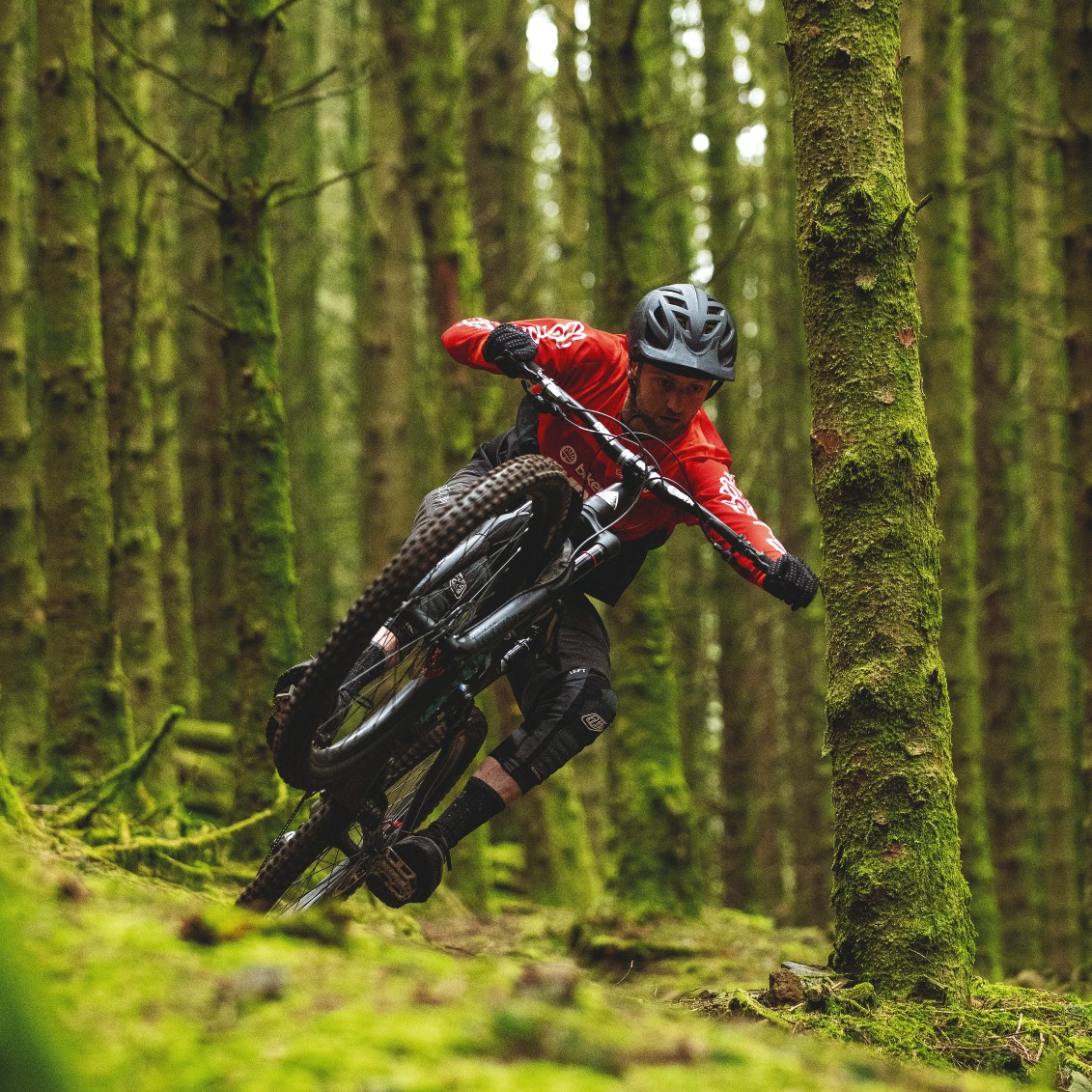When I was a wee nipper, and just getting into downhill riding, the bike I always lusted after but never owned was an orange and black Kona Stinky. Well, some 13 years later that wish has sort of come true, in the form of my new long-term test bike.
The 2017 Operator is a far cry from that old Stinky, but it looks pretty damn good: long at the front (460mm reach on the large), super short at the back (423mm chainstays) and seriously low in the bottom bracket (349mm).
Aussie flat pedal pinner Connor Fearon certainly has no problem ripping apart corners on his, so I’ve got no excuses!
Kona Operator DL first impressions
Pulling the bike out of the box, the first thing I noticed was the weight. At 18.58kg without pedals it’s certainly no featherweight. This is due to a pretty chunky aluminium frame and a build kit that’s definitely on the heavy side: a coil sprung Rock Shox Boxxer fork and Kage shock, Mavic 729 rims, Shimano Zee crankset and a steel-backed MRP chain guide.
On the trail though, I was surprised how nimble the bike felt and putting the wheels where I wanted them never felt like too much hard work.
There were some negatives though. Fit-wise I couldn’t get on with the very backswept shape of the Kona handlebars and the stock seatpost is so short that I had to run my saddle way lower than normal. This is all minor stuff to fix of course.
My only other gripe was that the stock suspension set up didn’t give the bike a very balanced ride. I found that the combination of the firm sprung Boxxer fork and 500lb spring in the back meant that the back-end wallowed and it was hard to weight the front. This was solved by fitting a 550lb spring, which equalled things out nicely.
MBUK staff writer Ed testing the Kona Operator DL at Black Mountains Cycle Centre
Kona Operator DL upgrades
While the Operator handles superbly at speed, the weight definitely makes it feel a bit sluggish on flatter gradients. To try and overcome that I’ve put the bike on a bit of a diet, starting with the slightly odd shaped Kona bars.
I’ve swopped these out for a personal favourite combo, a 35mm Race Face Atlas stem and SixC carbon bars. I’ve also made a few drivetrain changes, ditching the Shimano Zee cranks for a pair of lighter Truvativ Descendants and losing a few cogs on the cassette in the form of SRAM’s new GX downhill 7-speed groupset.
Other bits that I’m currently testing on the bike are the new LG1+ chain guide from e*thirteen, SDG’s new I-Fly 2.0 seat and post, and a set of Hope Tech DH wheels. Expect reviews of all this kit in MBUK once I’ve had a chance to put it through its paces.
Spec check
- Fork: RockShox Boxxer Race (firm spring, zero clicks of compression damping)
- Shock: RockShox Kage RC (550lb spring, medium rebound tune)
- Wheels: Hope Tech DH rims laced to Hope Pro 4 hubs
- Tyres: Maxxis Minion DHF 27.5x2.5inch 3C MaxxGrip (front and back)
- Drivetrain: SRAM GX DH 7-speed
- Crankset: Truvativ Descendent (165mm arms, 36 tooth chainring)
- Brakes: SRAM Guide R (203mm rotors front and back)
- Bar and stem: Race Face SixC bar (cut to 790mm) / Race Face Atlas direct mount stem (50mm)
- Grips: ODI Elite Flow
- Seat and post: SDG I-Fly 2.0 / I-Beam carbon fibre post
- Kona Operator DL £3,799.99, Kona World
